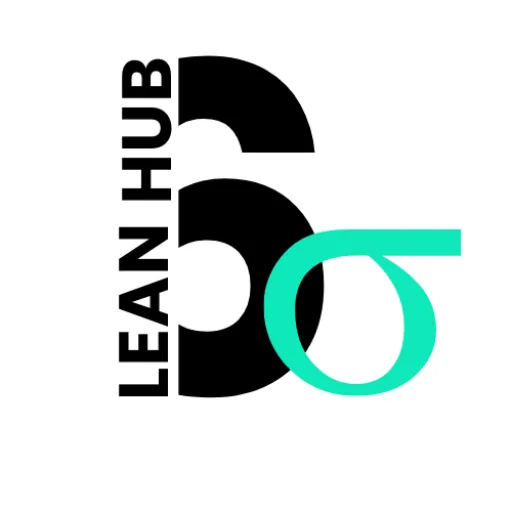Mapping the Current and Future State of Process Efficiency
In today’s fast-paced business environment, the concept of process efficiency has emerged as a cornerstone for organizations striving to maintain a competitive edge. We find ourselves in a landscape where resources are limited, and the demand for high-quality output is ever-increasing. As we navigate through this complexity, understanding and enhancing process efficiency becomes not just beneficial but essential.
By optimizing our processes, we can reduce waste, improve productivity, and ultimately deliver greater value to our customers. This journey towards efficiency is not merely about cutting costs; it is about creating a culture of continuous improvement that permeates every level of our organization. As we delve deeper into the realm of process efficiency, we recognize that it encompasses a variety of elements, including time management, resource allocation, and workflow optimization.
Each of these components plays a vital role in shaping how effectively we operate. By focusing on process efficiency, we can streamline operations, enhance collaboration among teams, and foster innovation. This article will explore the significance of mapping our current state, the tools and techniques available for this purpose, and the strategies we can employ to predict and implement improvements for our future state.
Key Takeaways
- Mapping the current state of a process is crucial for identifying inefficiencies and areas for improvement
- Tools and techniques such as value stream mapping and process flow diagrams can be used to map the current state effectively
- Analyzing and improving the current state involves identifying bottlenecks, waste, and opportunities for streamlining
- Predicting the future state of process efficiency requires considering potential changes and their impact on the process
- Strategies for improving the future state may include implementing new technologies, training employees, and reorganizing workflows
Importance of Mapping Current State
Identifying Inefficiencies
By visualizing our workflows, we can identify bottlenecks, redundancies, and areas where resources are being underutilized.
This clarity is essential for making informed decisions about where to focus our improvement efforts.
Without a clear picture of our current state, any attempts at optimization may be misguided or ineffective.
Fostering a Culture of Transparency
Moreover, mapping our current state fosters a culture of transparency and collaboration within our teams. We engage employees in this process, we not only gather valuable insights but also empower them to take ownership of their roles in the organization.
Building a Shared Understanding
This collaborative approach encourages open communication and helps us build a shared understanding of our operational challenges. As we work together to map our current state, we create a foundation upon which we can build more efficient processes that align with our organizational goals.
Tools and Techniques for Mapping Current State
To effectively map our current state, we have access to a variety of tools and techniques that can facilitate this process. One of the most widely used methods is process mapping, which involves creating visual representations of workflows. Tools such as flowcharts and swimlane diagrams allow us to illustrate the sequence of activities, decision points, and interactions between different roles within the organization.
By employing these visual aids, we can easily identify inefficiencies and areas for improvement. In addition to traditional mapping techniques, we can leverage technology to enhance our understanding of current processes. Software solutions such as business process management (BPM) tools provide us with advanced capabilities for modeling and analyzing workflows.
These tools often come equipped with features that allow us to simulate changes and assess their potential impact on overall efficiency. By utilizing these modern technologies alongside conventional methods, we can create a more comprehensive view of our current state and make data-driven decisions about future improvements.
Analyzing and Improving Current State
| Metrics | Current State |
|---|---|
| Customer Satisfaction | 85% |
| Employee Turnover Rate | 12% |
| Productivity Index | 92% |
| Quality Defect Rate | 0.5% |
Once we have mapped our current state, the next step is to analyze the information we’ve gathered. This analysis involves scrutinizing each component of our processes to identify inefficiencies and areas ripe for improvement. We can employ various analytical techniques, such as root cause analysis or value stream mapping, to dig deeper into the underlying issues affecting our workflows.
By understanding the root causes of inefficiencies, we can develop targeted strategies that address these problems directly.
Improving our current state requires a proactive approach that involves collaboration across departments.
We must engage stakeholders from various functions to gather diverse perspectives on the challenges we face.
This collaborative effort not only enriches our analysis but also fosters buy-in for the changes we propose. As we implement improvements based on our findings, it is crucial to monitor the impact of these changes closely. By establishing key performance indicators (KPIs), we can measure the effectiveness of our initiatives and make adjustments as needed to ensure sustained progress.
Predicting Future State of Process Efficiency
As we look ahead, predicting the future state of process efficiency becomes an essential aspect of our strategic planning. By analyzing trends in our industry and considering emerging technologies, we can anticipate how our processes may evolve over time. This foresight allows us to proactively adapt our operations to meet changing demands and capitalize on new opportunities.
We must remain vigilant in monitoring external factors that could influence our processes, such as shifts in customer preferences or advancements in automation. In addition to external factors, we should also consider internal dynamics when predicting our future state. As we implement improvements based on our current state analysis, we must envision how these changes will shape our workflows in the long run.
Engaging employees in this predictive exercise can yield valuable insights, as they often possess firsthand knowledge of the challenges and opportunities within their roles. By fostering a culture of innovation and encouraging forward-thinking discussions, we can collectively envision a future state that aligns with our organizational goals.
Strategies for Improving Future State
Embracing Continuous Improvement Methodologies
One approach is to embrace continuous improvement methodologies such as Lean or Six Sigma. These frameworks provide us with structured processes for identifying waste and enhancing quality within our operations. By adopting these methodologies, we can create a culture that prioritizes efficiency and empowers employees to contribute to ongoing improvements.
Leveraging Advanced Technologies
Another strategy involves investing in technology that supports automation and data analytics. As we look toward the future, leveraging advanced technologies such as artificial intelligence (AI) and machine learning can significantly enhance our ability to optimize processes. These tools enable us to analyze vast amounts of data quickly and identify patterns that may not be immediately apparent through manual analysis.
Enhancing Operational Agility
By integrating technology into our operations, we position ourselves to respond more effectively to changing market conditions and customer needs.
Implementing Changes for Future State
Implementing changes aimed at improving our future state requires careful planning and execution. We must develop a clear roadmap that outlines the steps necessary to achieve our desired outcomes. This roadmap should include timelines, resource allocation, and responsibilities for each team member involved in the implementation process.
By establishing a structured approach, we can minimize disruptions to ongoing operations while ensuring that everyone is aligned with our goals. Communication plays a pivotal role during this implementation phase. We must keep all stakeholders informed about the changes being made and the rationale behind them.
Engaging employees through training sessions or workshops can help them understand how these changes will impact their roles and contribute to overall process efficiency. By fostering an environment of open dialogue and support, we can facilitate a smoother transition toward our future state.
Monitoring and Sustaining Process Efficiency
The journey toward process efficiency does not end with implementation; it requires ongoing monitoring and sustaining efforts to ensure lasting success. We must establish mechanisms for tracking performance metrics regularly to assess whether the changes we’ve made are yielding the desired results. By continuously evaluating our processes against established KPIs, we can identify areas that may require further refinement or adjustment.
Sustaining process efficiency also involves fostering a culture of continuous improvement within our organization. We should encourage employees to share their insights and suggestions for further enhancements regularly. By creating channels for feedback and recognizing contributions from team members, we reinforce the importance of ongoing optimization efforts.
As we commit ourselves to this journey of continuous improvement, we position ourselves not only for immediate success but also for long-term sustainability in an ever-evolving business landscape. In conclusion, achieving process efficiency is an ongoing endeavor that requires careful mapping of our current state, strategic planning for future improvements, and a commitment to monitoring progress over time. By embracing collaboration, leveraging technology, and fostering a culture of continuous improvement, we can navigate the complexities of today’s business environment while delivering exceptional value to our customers.
Together, let us embark on this journey toward greater efficiency and effectiveness in all that we do.
FAQs
What is a current state map?
A current state map is a visual representation of a process as it exists today, including all the steps, activities, and inefficiencies. It helps to identify areas of waste, bottlenecks, and opportunities for improvement.
How do you build a current state map?
To build a current state map, you first need to understand the process by observing and documenting each step. This can be done through interviews, data collection, and direct observation. Once the process is understood, it can be mapped out using symbols and diagrams to represent the flow of activities.
What is a future state map?
A future state map is a visual representation of an optimised process, after waste has been eliminated and improvements have been implemented. It envisions a smoother flow, fewer delays, and a more efficient way of working.
How do you build a future state map?
Building a future state map involves identifying and implementing improvements to the current process. This can be done through brainstorming, problem-solving techniques, and the application of lean principles. Once the improvements are identified, they can be mapped out to create a visual representation of the future state.






